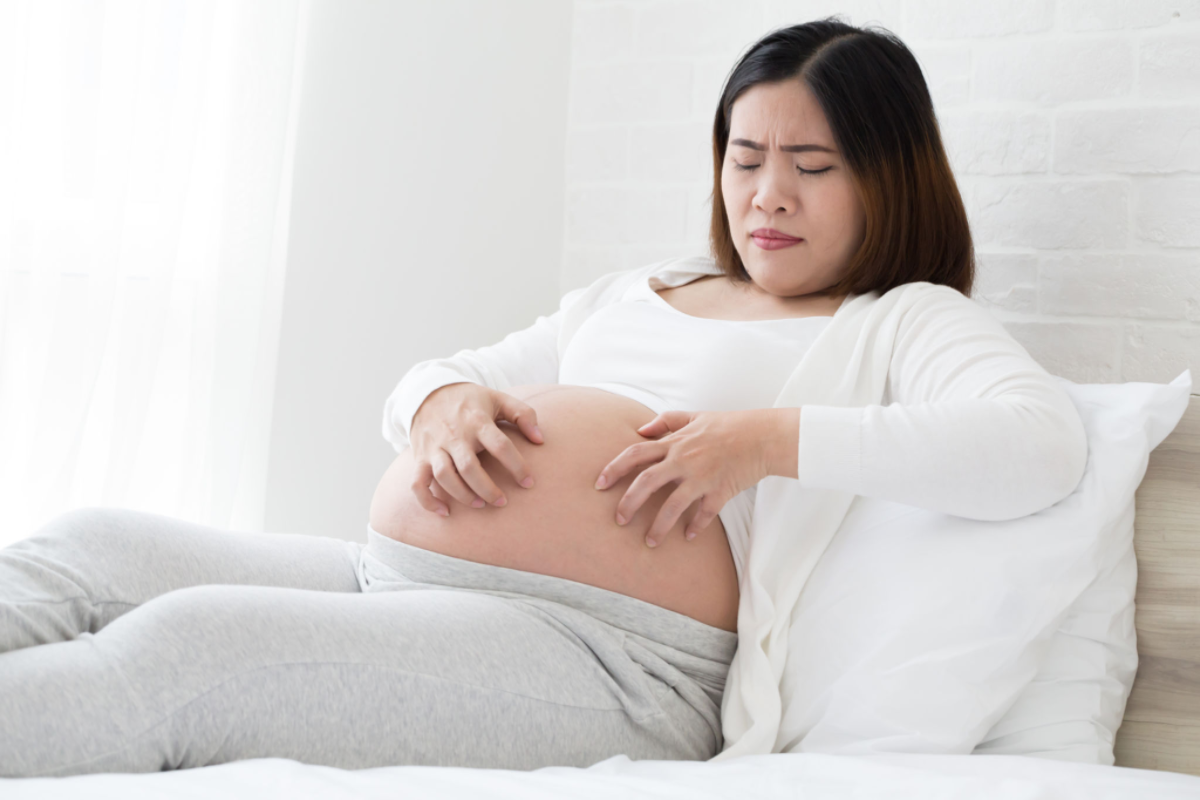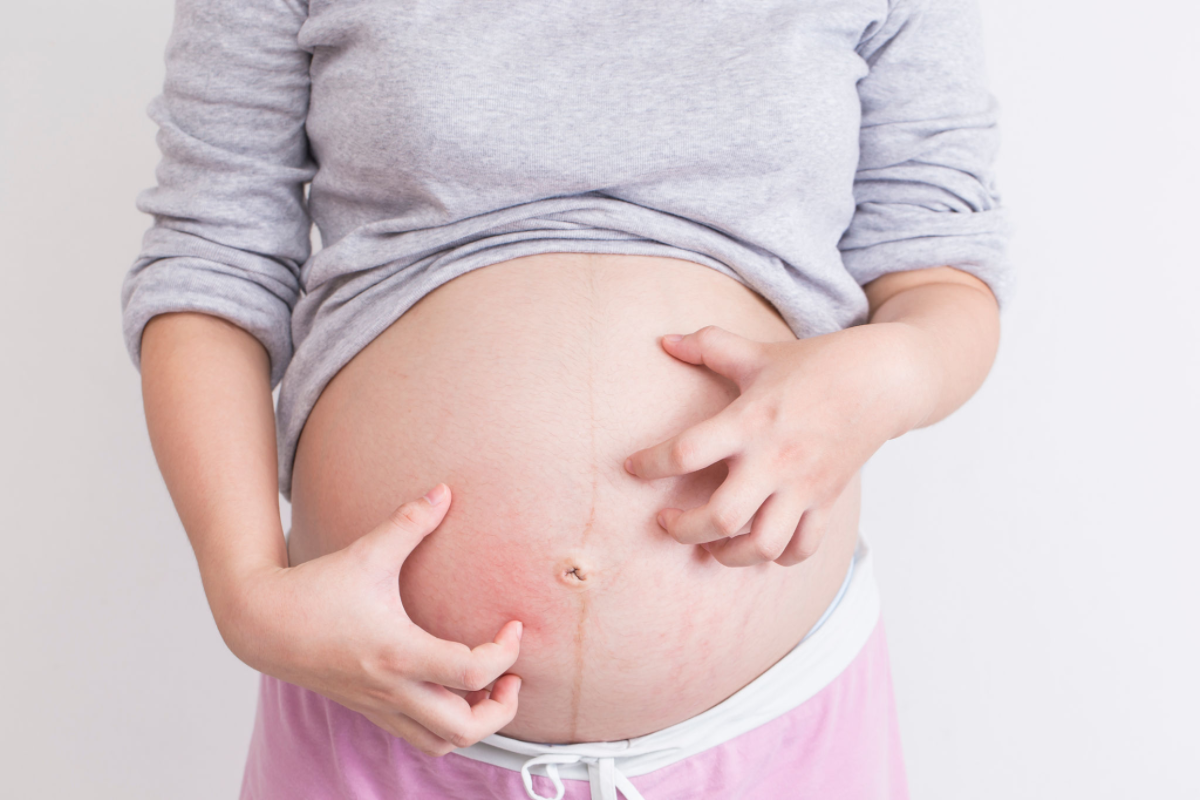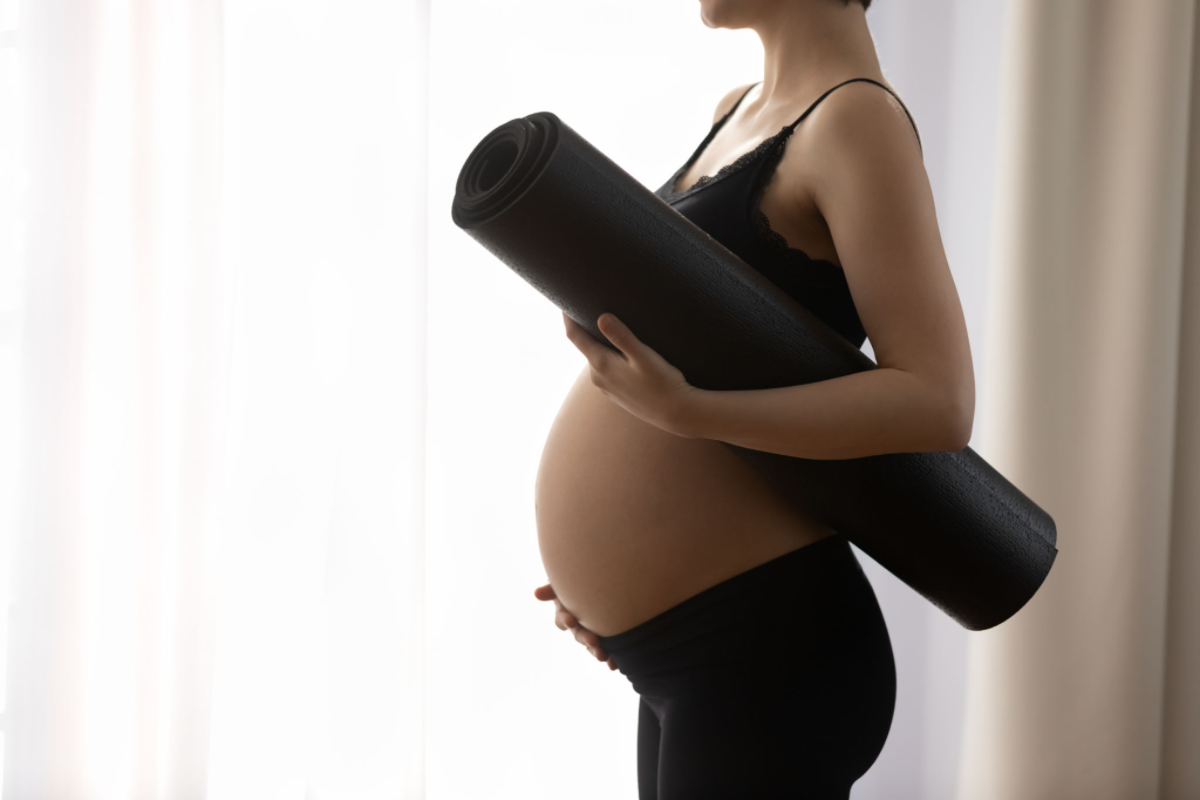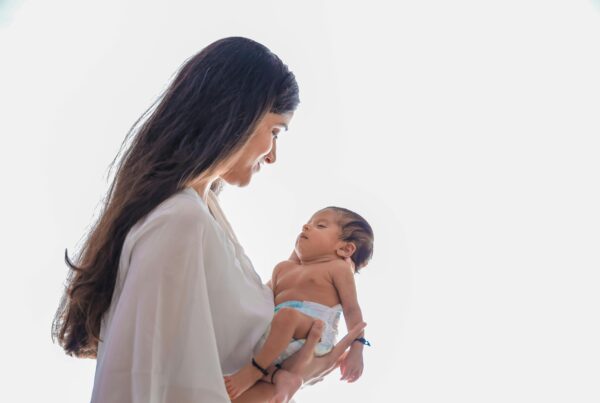Welcome to Motherhood Center, your trusted partner on the incredible journey of motherhood. Expecting a child is a remarkable and transformative experience, but it can also come with its unique challenges. One such challenge that many expectant mothers face is the mysterious and discomforting condition known as PUPPP. We understand that when you’re expecting, every moment counts, and every question deserves an answer. That’s why we’ve created this comprehensive guide – to shed light on PUPPP, provide you with valuable insights, and offer support and solutions that will help you navigate this phase with confidence and grace.
PUPPP, or Pruritic Urticarial Papules and Plaques of Pregnancy, may sound unfamiliar, but for those who have experienced its itching and discomfort, it’s a condition that lingers in memory. In this guide, we will unravel the mysteries surrounding PUPPP, exploring its causes, symptoms, and management strategies. Whether you’re a first-time mom or adding another member to your family, our aim is to empower you with knowledge and provide a reassuring hand during this remarkable chapter of your life. Let’s embark on this journey together, as we navigate the world of PUPPP and find comfort in the arms of Motherhood Center’s expertise and care.
What Is PUPPP?
Pruritic Urticarial Papules and Plaques of Pregnancy, commonly known as PUPPP, is a dermatological condition that can affect expectant mothers during their pregnancy journey. While the joy of impending motherhood is undeniable, PUPPP can introduce an unexpected and uncomfortable twist to this beautiful chapter. In this section, we’ll delve into the fundamental aspects of PUPPP, providing you with a comprehensive understanding of what this condition entails.
Defining PUPPP
PUPPP is a skin condition that typically manifests during the third trimester of pregnancy, although it can occur earlier in some cases. It’s characterized by the development of itchy, red, and raised bumps on the skin, often accompanied by a rash. These papules and plaques can appear anywhere on the body but are most commonly found on the abdomen, thighs, buttocks, and sometimes on the arms and legs. The itching associated with PUPPP can range from mild to severe and can significantly impact a mother-to-be’s comfort and quality of life during pregnancy.
Occurrence and Prevalence
The exact cause of PUPPP remains somewhat of a mystery, but it is believed to be related to the stretching of the skin as the baby grows in the womb. While it can affect any pregnant woman, certain factors may increase the likelihood of developing PUPPP. These include carrying multiples (twins or more), a first-time pregnancy, and rapid weight gain during pregnancy. It’s important to note that PUPPP is not contagious, and it doesn’t pose any direct harm to the baby. However, the intense itching and discomfort it brings can make it a challenging condition to endure.
Who Is at Risk?
While PUPPP can occur in any pregnancy, some women may be more predisposed to developing this condition. First-time mothers and those expecting multiple babies (such as twins or triplets) are more likely to experience PUPPP. Additionally, women with a history of allergies or skin conditions like eczema may have a higher risk. Genetics may also play a role, as PUPPP tends to run in families. Despite these factors, it’s essential to remember that PUPPP can affect anyone, and its onset can be unpredictable.
Recognizing the Symptoms
Recognizing PUPPP primarily involves identifying its distinct symptoms. The hallmark of PUPPP is intense itching, often described as relentless and unbearable. This itching is usually accompanied by the appearance of small, red bumps or hives, which can merge into larger, raised plaques on the skin. The rash tends to start on the abdomen and can spread to other areas of the body, creating discomfort and distress for expectant mothers. Understanding these symptoms is crucial for early detection and seeking appropriate care and relief. In the following sections, we’ll explore the potential causes behind PUPPP and effective strategies for coping with its symptoms during pregnancy.
The Causes Behind PUPPP
Understanding the causes of Pruritic Urticarial Papules and Plaques of Pregnancy (PUPPP) is a crucial step in managing and alleviating this discomforting condition during pregnancy. While the exact trigger remains elusive, several factors are believed to contribute to the onset of PUPPP. In this section, we will delve into these potential causes, shedding light on what might be behind the development of PUPPP for expectant mothers.
Hormonal Factors
One leading theory regarding PUPPP revolves around hormonal changes during pregnancy. As your body adapts to nurture and sustain the growing life within, hormonal fluctuations are inevitable. Some researchers believe that these hormonal shifts, particularly changes in estrogen and progesterone levels, may play a role in triggering PUPPP. These hormonal adjustments can influence the immune system’s response and the behavior of skin cells, potentially leading to the development of PUPPP symptoms.
Genetic Predisposition
The genetics of PUPPP is an area of ongoing research. It has been observed that PUPPP tends to run in families, suggesting a genetic predisposition. If you have a close family member who experienced PUPPP during their pregnancy, you may be at a higher risk of developing it as well. While the exact genetic factors at play remain under investigation, understanding your family’s medical history can provide valuable insights into your potential risk for PUPPP.
Multiple Pregnancy Connections
PUPPP is more commonly reported in pregnancies involving multiples, such as twins or triplets. The increased strain on the skin due to the larger womb size may contribute to the development of PUPPP. The stretching of the skin, particularly in the abdominal area, is believed to be a significant factor in the development of this condition. Additionally, the higher levels of hormones in multiple pregnancies may further increase the risk of PUPPP. If you are carrying more than one baby, it’s important to be aware of this potential risk factor and the symptoms associated with PUPPP.
Other Potential Triggers
While hormonal changes, genetics, and multiple pregnancies are significant factors associated with PUPPP, it’s important to note that there is no single definitive cause. Other potential triggers and contributing factors are still being explored by medical researchers. Some women may develop PUPPP without any clear risk factors, emphasizing the complexity of this condition.
Coping with PUPPP Symptoms
Coping with the symptoms of Pruritic Urticarial Papules and Plaques of Pregnancy (PUPPP) during your pregnancy journey can be both physically and emotionally challenging. The intense itching and discomfort can test your resilience, but rest assured that there are strategies and solutions available to help you manage this condition effectively. In this section, we will explore various approaches to cope with PUPPP symptoms, providing you with guidance on how to find relief and enhance your well-being during pregnancy.
Safe Skincare and Lifestyle Choices
One of the first steps in managing PUPPP symptoms is adopting a skin-friendly approach to your daily routine. Opt for gentle, hypoallergenic skincare products that do not contain harsh chemicals or fragrances. Lukewarm baths with oatmeal or baking soda can soothe irritated skin, and it’s essential to pat your skin dry gently after bathing, avoiding rubbing that could worsen the condition. Loose-fitting clothing made from breathable fabrics like cotton can help minimize irritation from friction.
Recommended Products
Numerous over-the-counter creams and ointments are available to alleviate the itching and discomfort associated with PUPPP. Your healthcare provider can recommend or prescribe creams containing corticosteroids or antihistamines that are safe for use during pregnancy. These topical treatments can provide relief by reducing inflammation and itching. It’s crucial to follow your healthcare provider’s guidance on the appropriate use of these products to ensure your safety and the well-being of your baby.
Home Remedies for Itch Relief
In addition to medical treatments, there are several home remedies that you can incorporate into your daily routine to help relieve the itching caused by PUPPP. Applying cool compresses to affected areas can provide temporary relief, as can keeping your skin well-hydrated with moisturizers. Aloe vera gel, chamomile tea, or calamine lotion may also offer soothing effects when applied topically. However, it’s important to consult with your healthcare provider before trying any home remedies to ensure they are safe for you and your baby.
When to Seek Medical Help
While managing PUPPP symptoms at home is often possible, there are situations where medical intervention is necessary. If your symptoms worsen, or if you notice signs of infection such as increased redness, warmth, or pus, it’s crucial to contact your healthcare provider promptly. They can assess your condition and determine if additional treatments, such as oral medications, are needed to manage PUPPP effectively. Your well-being and the health of your baby are top priorities, so never hesitate to seek medical guidance when in doubt.
In the following sections, we will further explore the impact of PUPPP on pregnancy and delivery, as well as strategies for creating a PUPPP management plan in collaboration with your healthcare provider.
PUPPP and Pregnancy: What to Expect
Pregnancy is a miraculous journey, but it can also be filled with unexpected challenges. Pruritic Urticarial Papules and Plaques of Pregnancy (PUPPP) is one such challenge that some expectant mothers encounter. Understanding how PUPPP may impact your pregnancy and what to expect as you navigate this condition is essential for maintaining both your physical comfort and peace of mind. In this section, we will explore the various aspects of how PUPPP can influence your pregnancy journey and what to anticipate.
Impact on Pregnancy
PUPPP can introduce discomfort and distress into your pregnancy experience, primarily due to its hallmark symptom—intense itching. This itching, which often intensifies during the third trimester, can disrupt your sleep, daily activities, and overall quality of life during pregnancy. The persistent itching can sometimes make it challenging to focus on the joys of impending motherhood. It’s important to remember that while PUPPP can be incredibly uncomfortable, it typically does not pose a direct threat to the health of your baby.
Effects on Delivery
Many expectant mothers wonder how PUPPP might affect the process of childbirth. Generally, PUPPP does not impact the delivery itself or the health of your baby. However, it’s crucial to communicate openly with your healthcare provider about your PUPPP symptoms as your due date approaches. They can provide guidance on managing the condition and ensuring your comfort during labor and delivery. While PUPPP may persist until childbirth, it often resolves shortly after delivery, bringing much-needed relief.
Risks and Complications
While PUPPP is generally considered a benign condition, it’s essential to be aware of potential risks and complications that can arise. Scratching the itchy areas vigorously can lead to open sores or secondary skin infections. These complications can be managed with proper medical care, emphasizing the importance of regular communication with your healthcare provider. Additionally, the emotional toll of dealing with PUPPP during pregnancy should not be underestimated. If you find yourself struggling with stress, anxiety, or depression related to PUPPP, seek support from healthcare professionals or support groups specializing in maternal mental health.
In the next section, we will delve into developing a PUPPP management plan in partnership with your healthcare provider, ensuring you receive the best possible care and support throughout your pregnancy.
Your PUPPP Management Plan
Developing a comprehensive PUPPP management plan in collaboration with your healthcare provider is crucial for effectively navigating this condition during pregnancy. While PUPPP can be uncomfortable, proactive steps can help you find relief and enhance your well-being. In this section, we will outline key elements of a PUPPP management plan to ensure you receive the best possible care and support throughout your pregnancy.
Partnering with a Healthcare Provider
Your healthcare provider will be your trusted guide in managing PUPPP. It’s essential to communicate openly and honestly with them about your symptoms, concerns, and questions. They can perform a thorough examination to confirm the diagnosis and rule out any other potential skin conditions. Based on their assessment, they will recommend appropriate treatments and interventions to alleviate your symptoms and ensure the well-being of both you and your baby.
Prenatal Yoga and Fitness for Comfort
Engaging in prenatal yoga and fitness classes, like those offered by Motherhood Center, can significantly benefit expectant mothers managing PUPPP. These specialized classes, led by certified instructors and experienced yoga practitioners, promote relaxation, stress reduction, and flexibility, all of which are crucial for PUPPP symptom management during pregnancy. Motherhood Center’s classes are tailored to the unique needs of pregnant women, fostering a supportive community for those facing similar challenges. Be sure to consult your healthcare provider before starting any new exercise routine during pregnancy to ensure safety and suitability for your condition.
Massage and Relaxation Techniques
Massage therapy and relaxation techniques are pivotal in alleviating PUPPP discomfort. Gentle massages, particularly focusing on affected areas, provide relief from itching and promote relaxation. At Motherhood Center, certified prenatal massage therapists offer tailored sessions for expectant mothers, ensuring a supportive environment. Additionally, incorporating relaxation techniques like deep breathing and mindfulness meditation can effectively manage PUPPP-related stress and anxiety, contributing to overall well-being during this transformative time.
Dietary Adjustments for Skin Health
While dietary changes won’t cure PUPPP, they can contribute to your overall skin health and well-being. Staying well-hydrated is essential, so be sure to drink plenty of water. Additionally, incorporating foods rich in antioxidants, vitamins, and minerals can support skin health. These include fruits and vegetables, whole grains, and foods high in omega-3 fatty acids, such as fish. Discussing your dietary choices with your healthcare provider or a registered dietitian can help you make informed decisions that benefit your skin and overall health.
In collaboration with your healthcare provider and by incorporating these strategies into your PUPPP management plan, you can enhance your comfort and well-being throughout your pregnancy journey. Remember that you are not alone in this experience, and there is support and guidance available to help you navigate PUPPP with confidence and grace.
Preparing for Postpartum Relief
The journey through pregnancy doesn’t end with childbirth; it continues into the postpartum period, a time of adjustment and recovery for both you and your baby. If you’ve experienced Pruritic Urticarial Papules and Plaques of Pregnancy (PUPPP) during your pregnancy, you might be wondering how it will affect your postpartum experience. In this section, we’ll explore what you can expect during the postpartum period and how to prepare for relief after your baby arrives.
Post-Delivery Expectations
After the joyous moment of giving birth, your body will undergo significant changes as it transitions from pregnancy to postpartum. It’s important to note that PUPPP typically resolves shortly after delivery. As your body gradually sheds the effects of pregnancy, you can expect the itching and discomfort associated with PUPPP to diminish. However, it’s not uncommon for some symptoms to persist for a brief period as your body continues to adjust.
Breastfeeding and PUPPP
If you plan to breastfeed, you may wonder how PUPPP might affect this aspect of motherhood. The good news is that PUPPP does not typically interfere with breastfeeding. The symptoms should continue to improve, and any remaining discomfort should not impact your ability to provide nourishment and comfort to your newborn. However, if you have concerns about breastfeeding or experience any unexpected challenges, it’s essential to seek guidance from a lactation consultant or your healthcare provider.
Self-Care Post-Birth
The postpartum period is a time when self-care becomes crucial. While you focus on nurturing your newborn, don’t forget to prioritize your own well-being. Continue the self-care practices you’ve learned during pregnancy, such as gentle exercises, relaxation techniques, and skincare routines. Adequate rest, hydration, and nourishment are essential for your recovery. Consider seeking support from friends and family, and don’t hesitate to ask for assistance with daily tasks to ensure you have time for self-care and bonding with your baby.
Support Systems and Resources
The postpartum journey is a mix of rewards and challenges, and having a support network is invaluable. Your partner, family, and friends can provide essential emotional and practical support during this transitional phase. Additionally, at Motherhood Center, our Mama Circle provides a welcoming space for new mothers to connect, share experiences, and find camaraderie on their motherhood journey. While Motherhood Center does not specialize in PUPPP management and is not a medical facility, we are dedicated to supporting you in navigating the beautiful and transformative phase of early motherhood. Remember, you’re not alone on this journey, and there are resources available to assist you as you transition into this remarkable chapter of your life.
Conclusion
In the intricate journey of pregnancy, Pruritic Urticarial Papules and Plaques of Pregnancy (PUPPP) can introduce unexpected challenges. However, with the right knowledge, support, and resources, you can navigate this phase with grace and confidence. We’ve journeyed through the essential aspects of PUPPP, from understanding its causes to practical strategies for managing its symptoms.
At Motherhood Center, we are committed to supporting you throughout your pregnancy and beyond. Our Mama Circle offers a warm and welcoming community where you can connect with other mothers, share your experiences, and find the camaraderie you need. Our certified prenatal massage therapists are here to provide relief from discomfort, while our prenatal yoga and fitness classes offer a holistic approach to well-being during pregnancy.
We also provide valuable pregnancy and parenting education and virtual classes for those who may be unable to attend in person. Your journey into motherhood is unique, and we are here to accompany you every step of the way. Don’t hesitate to reach out to the Motherhood Center for more information about Mama Circle, massage services, prenatal yoga and fitness classes, pregnancy and parenting education, or virtual classes. Together, we can ensure that your pregnancy and motherhood experience is one filled with knowledge, support, and joy.
FAQs
What exactly is PUPPP, and why does it occur during pregnancy?
PUPPP stands for Pruritic Urticarial Papules and Plaques of Pregnancy. It’s a skin condition characterized by itching, red bumps, and rashes during pregnancy. While its exact cause remains unclear, hormonal changes and genetic factors are believed to contribute to its development.
Are there any safe and effective home remedies for PUPPP itching?
Yes, there are some home remedies that may help alleviate PUPPP itching. These include cool compresses, oatmeal or baking soda baths, aloe vera gel, and calamine lotion. However, always consult with your healthcare provider before trying any home remedies.
When should I seek medical help for PUPPP symptoms?
If your PUPPP symptoms worsen, you notice signs of infection (such as increased redness, warmth, or pus), or if you have concerns about the severity of your symptoms, it’s crucial to contact your healthcare provider promptly for evaluation and guidance.
Can PUPPP affect my baby or the delivery process?
PUPPP itself does not typically affect the health of your baby or the delivery process. It’s considered a skin condition that usually resolves shortly after childbirth. However, always keep your healthcare provider informed about your PUPPP symptoms during pregnancy.
How can the Motherhood Center assist me in managing PUPPP during pregnancy?
While Motherhood Center does not specialize in PUPPP management, we offer a range of supportive services, including prenatal yoga and fitness classes, massage services, pregnancy and parenting education, virtual classes, and our Mama Circle community. These resources can enhance your overall well-being during pregnancy and motherhood.






